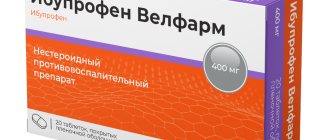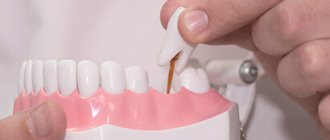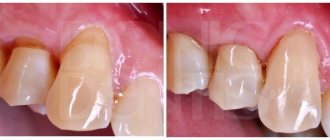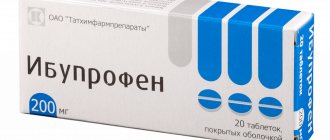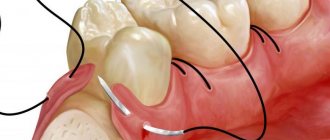Premedication during chemotherapy in a broad sense is required for everyone starting a cycle, because it allows you to speed up subsequent recovery. In a narrow sense, premedication is necessary when using a small number of specific anticancer drugs that cause life-threatening complications already during administration. The second indication is a mandatory treatment option, and the first is available to very few patients in the proper amount.
- What is chemotherapy?
- Premedication and preparation for chemotherapy
- Improving liver function before chemotherapy
- Prevention of blood clots
- Chemotherapy course prices
What is chemotherapy?
For patients, chemotherapy is any antitumor treatment, while formally it is assumed that only cytostatics are used without hormonal, targeted drugs and immuno-oncological agents.
Chemotherapy kills cells, malignant and normal, a single dose of a cytostatic is not the maximum effective amount of medicine, but a mass of a chemical reagent that allows one to maintain some balance between possible effectiveness without intolerable toxicity.
Before entering into widespread practice, an antitumor drug is comprehensively tested in a clinical trial, which involves patients suffering from advanced cancer who have undergone more than one course of chemotherapy. The effect of the drug on the life expectancy of patients and the range of adverse reactions are being studied. The drug receives approval for use if it prolongs life by several weeks, but only with a minimal percentage of severe toxicity.
The introduction of an anticancer drug into clinical practice does not stop its study in observational studies, where side effects are scrupulously calculated; it should be noted that the effectiveness of the drug is often increased because it is used not only on patients deprived of prospects, as in a clinical trial, but also on primary patients .
Premedication
A. M. Kokhan , anesthesiologist at Medical On Group (Odintsovo, International Medical Center)
Dentists often invite an anesthesiologist to help them see a patient who is afraid of treatment. At the same time, they say that the patient requires premedication. Obviously, the concepts of premedication and sedation are confused here. It would be more correct to say that the patient requires anesthesiological assistance, simply the participation of an anesthesiologist in treatment.
What is premedication? This is the definition given by the “Guide to practical training in anesthesiology, resuscitation and intensive care”, edited by N. M. Fedorovsky, 2002:
Premedication (from Latin pre - before; Latin medicamentum - medicine) is the preliminary medicinal preparation of a patient for general anesthesia and surgery. The purpose of this preparation is to reduce the patient’s anxiety level, reduce gland secretion, and enhance the effect of anesthesia drugs.
In other words, premedication is preparation for treatment, usually surgical. The concepts of surgical and therapeutic treatment in general medicine and dentistry are very different, if only because the internist, as a rule, does not use anesthesia for therapeutic treatment. In dentistry, on the contrary, therapeutic treatment often requires local anesthesia.
What is premedication, what components does it consist of? The above-mentioned “Guide” provides a classic set of premedication components:
“Premedication is a combination of drugs and in most cases includes a narcotic analgesic, a sedative and an antihistamine.”
Premedication - preliminary medical preparation of the patient for general anesthesia and surgery
An example of this combination is the famous “troika” from hospitals during the times of developed socialism: promedol, diphenhydramine, atropine. I will not dwell in detail on the disadvantages and advantages of this set of drugs, I will only say that this standard was not suitable for all patients, and the effect of using the “triad” was sometimes completely opposite. At the present stage of development of medical science, given the peculiarities of domestic legislation on the circulation of medicines, a doctor’s capabilities in the field of using medicines have changed significantly, so let’s take a break from the classical schemes and move on to the realities of today.
First, let's determine what effect we need to get from premedication. The general goal of drug preparation for intervention is the stable condition of the patient, which can be divided into several components; accordingly, measures affecting each of them can be divided.
Anxiolytic treatment can confidently be placed in first place. Any patient experiences varying levels of stress when visiting a doctor [2]. An appointment with a dentist often causes fear and anxiety [3] than with other specialists, so the patient should be prescribed anxiolytics that will reduce the intensity of the experience of waiting for an appointment. It is recommended to prescribe anxiolytics in two stages: at night, on the eve of treatment, and one to two hours before the start of treatment, taking into account the duration of action of the drug.
Given the extensive list of registered drugs, it is possible to use herbal-based anxiolytics, for example the following scheme:
- Persen, one tablet in the morning and one tablet in the afternoon the day before treatment.
- On the same day, take Sanoson, two tablets two hours before bedtime.
- An hour before treatment, take two sanoson tablets.
However, if the dentist has the opportunity to prescribe benzodiazepines to the patient, preference should be given to them [3]. The mechanism of action of benzodiazepines is based on their effect on GABAergic receptors found in various brain structures, primarily in limbic (emotiogenic) structures. Under the influence of benzodiazepines, the sensitivity of these receptors to GABA, which is an inhibitory transmitter, increases, which leads to changes in the functioning of the nervous system.
In this regard, benzodiazepines have the following spectrum of action:
- Anxiolytic effect (anti-anxiety), due to the influence of benzodiazepines on the amygdala complex of the limbic system. This leads to a decrease in emotional lability, mental stress, fear, and anxiety.
- Sedative effect caused by the influence of benzodiazepines on the corresponding receptors localized in the reticular formation and nonspecific nuclei of the thalamus. The result of this action is a decrease in the speed and accuracy of reactions to external stimuli, drowsiness occurs, and a decrease in mental performance, so the prescription of benzodiazepines to people in specific professions should be done with caution.
- A hypnotic effect that is not true, but is due to the anxiolytic effect and is proportional to the psychosedative effect. Accelerates the process of falling asleep, increases the duration of sleep, which is close to physiological [3].
The dosage should be selected individually, taking into account the type of nervous system of the patient, the degree of anxiety, weight, height and age. When prescribing benzodiazepines, it is necessary to warn the patient, or better yet, get a signature from him that he will not drive a car or operate dangerous machinery, conduct important negotiations, take exams, etc. for the entire duration of the drug’s effect (about 24 hours).
The use of antihistamines, which is suggested by the “Guide to practical training in anesthesiology, resuscitation and intensive care” edited by N. M. Fedorovsky [1], and was previously prescribed routinely in hospitals, according to modern views on the mechanism of development of allergic reactions is not recommended: to prevent anaphylactic shock they cannot [4]. However, their use is advisable, given the side sedative effect and potentiation of the action of anxiolytics by almost all anti-allergy drugs. Therefore, antihistamines should not be excluded in anxious patients.
The next component of premedication should be medications that stabilize the patient’s somatic condition. In a healthy person, the anxiolytic component will cope with this perfectly, but in a person who is compromised in certain organs and systems, drugs should be prescribed based on anamnesis morbi and vitae.
Premedication is a combination of drugs and in most cases includes a narcotic analgesic, a sedative and an antihistamine.
Before treating patients suffering from a serious chronic disease (chronic ischemic heart disease, heart failure of various origins, stage 2-4 hypertension, conditions after myocardial infarction, cerebrovascular accidents, etc.), it is recommended to schedule a consultation with a specialist who will give recommendations on premedication and adjust the patient’s chronic treatment before visiting the dentist. It is quite possible to involve an anesthesiologist to prescribe premedication and adjust the patient’s physical condition during treatment (therapeutic support of the intervention).
Here we should especially focus on patients who are constantly taking antiplatelet agents and anticoagulants. As a rule, there is no need to cancel or change the regimen of anticoagulant or antiplatelet therapy before performing minor surgical operations in the oral cavity. In this case, you need to focus on the severity of the patient’s condition, the result of a blood test for coagulation and the presence of concomitant diseases.
Antiplatelet agents
Although a number of dentists recommend that their patients stop taking medications several days before surgery to prevent the possibility of bleeding, studies show that there is no need to stop taking low doses of the drug (75-100 mg/day). In most cases, the time to stop bleeding did not differ between patients who took antiplatelet agents and those who stopped taking them. In addition, according to one study, there is no need to stop high doses (325 mg/day) before removing a single tooth. Thus, it is necessary to eliminate the practice of stopping low (and in some cases high) doses of antiplatelet drugs before minor oral surgery.
In fact, stopping the use of antiplatelet drugs itself may provoke a higher risk of complications (for example, an attack of acute heart failure) than the risk of intra- and postoperative bleeding.
Anticoagulants
Most authors believe that if the INR (International Normalized Ratio) or INR (International Normal Ratio), a coagulation test that determines the clotting time of a patient's blood plasma after adding a mixture of tissue thromboplastin and calcium to it, is below four, it is necessary to cancel or There is no change in anticoagulant intake, since hemostasis can be achieved by local means. However, if the patient’s INR goes beyond the therapeutic corridor, the dentist, before performing surgery and adjusting treatment, is obliged to consult with the doctor who prescribed these drugs, with a view to discontinuing them several days before treatment [5]. Typically, medications that affect blood clotting are discontinued at least 5 days before the dentist appointment.
Separately, it should be said about the prevention of side effects of drugs used by dentists in the treatment of patients. In first place here are anesthetics that contain adrenaline; second place in frequency of use, but not in the effect produced, is occupied by retraction threads impregnated with adrenaline, used by orthopedists, since the generalized effect of the adrenaline contained in them often exceeds the effect of the general effect of anesthetics on the body of adrenaline. Another factor that plays a role here is that dentists do not take into account the generalized effect of adrenaline contained in the threads, because the doctor does not inject any drugs under the patient’s mucous membrane and it seems to him that the drug does not enter the body. Meanwhile, the ability of the oral mucosa to absorb substances exceeds the ability of the gastrointestinal mucosa: many tablet drugs are recommended to be dissolved under the tongue to speed up and enhance the effect [6]. Most modern anesthetics used in dentistry are based on articaine. Compared to other modern anesthetics, this drug has less overall effects on the body as a whole. However, it should be taken into account that articaine exhibits antagonism in the effects on skeletal muscles with antimyasthenic drugs such as kalimine and proserin, especially when used in high doses, which requires additional correction of the treatment of myasthenia gravis by the attending physician before visiting the dentist. In addition, like other local anesthetics, it lowers blood pressure and slows the rhythm of contraction of the heart muscle, so in response to possible objections that the drug is used locally, one can argue that from such a generously supplied tissue as the oral mucosa, it works quite well is absorbed into the bloodstream and has a general effect on the body [6].
Withdrawal of antiplatelet agents may result in a higher risk of complications than the risk of intra- and postoperative bleeding.
The same thing happens with adrenaline contained in the anesthetic capsule. In addition, most dentists do not use the spear-shaped plunger tip of a carpule syringe to pull back to determine if the needle is in a blood vessel, so direct injection of part or even the entire carpule into the bloodstream cannot be ruled out. However, the generalized effect of an anesthetic on the body is not as dangerous as a similar effect of adrenaline [7].
Often, the generalized side effects of adrenaline are not taken into account by dentists, but this should be done, since it not only causes anxiety in the patient, but also provokes a change in the somatic state: it causes an increase in blood pressure, tachycardia followed by bradycardia, rhythm disturbances (including atrial fibrillation and ventricles), coldness and pallor of the skin, vomiting, headache, metabolic acidosis. It can provoke myocardial infarction, cerebral hemorrhage (especially in elderly patients) and pulmonary edema, which for obvious reasons can be fatal.
It should be noted here that retraction threads impregnated with adrenaline, used simultaneously for several teeth, release the adrenaline they contain to the body in much greater quantities.
To prevent the generalized effects of adrenaline, adrenaline antagonists should be included in premedication. They are alpha- and beta-adrenergic receptor blockers [7].
Separately, I would like to dispel the myth about the possibility of reducing the gag reflex with antiemetic drugs.
Dentists trying to solve this patient’s problem with medication are divided into two groups: some advise including tablets used to treat transport sickness in the premedication, others recommend centrally acting antiemetics. Both recommendations are erroneous, because they do not take into account the mechanism of development of vomiting.
Nausea and vomiting, a protective reflex of the body, occurs for various reasons, and, accordingly, various reflex circuits are involved in its manifestation.
Specific drugs are designed to interrupt specific, different mechanisms of vomiting, but not all at once [7].
To prevent the generalized effects of adrenaline, adrenaline antagonists should be included in premedication. They are alpha and beta adrenergic receptor blockers
Thus, locomotion vomiting (transport disease) is provoked by a change in the position of the body in space and, accordingly, disruption of the entire chain of the human balance apparatus, from the balance organ located in the inner ear to the parts of the brain that perceive its signals.
The mechanism for the development of vomiting, triggered by irritation of the gastric mucosa, differs not only from the mechanism mentioned above, but also from the mechanism of vomiting caused by irritation of the posterior wall of the pharynx.
Irritation of the posterior pharyngeal wall can be relieved with superficial anesthesia applied to the pharyngeal mucosa by spraying.
But in patients, with rare exceptions, vomiting at a dentist’s appointment is caused by fear of treatment, so in this case it is necessary to influence precisely this reason. The best drug to prevent the occurrence of such a gag reflex is an anxiolytic.
Dentists often use atropine to treat increased salivation.
In many cases, premedication with an anticholinesterase drug is justified, but we should not forget that anticholinesterase drugs provoke tachycardia, the occurrence of which can be dangerous for patients compromised by the cardiovascular system. When prescribing atropine, a certain amount of caution should be exercised and it should be replaced with less aggressive drugs, such as platyphylline [7].
Analgesics occupy a special place in premedication. Non-steroidal anti-inflammatory and antipyretic drugs are used, which cause a number of possible complications, therefore their prescription is justified only if the patient has pain and only if the use of these drugs significantly reduces or relieves pain [8].
We should not forget about the importance of such a component of premedication as a preliminary conversation with the patient. Although verbal influence is not medicinal, it cannot be discounted. A calm, friendly conversation, a detailed explanation to the patient of the stages of treatment, indicating the moments at which he may experience pain or discomfort, indicating their duration and intensity (local anesthesia, pulp extraction, etc.), sometimes helps the effect is more effective than a set of well-chosen medications for premedication [9].
So, modern premedication before an outpatient dental appointment should include the following components and be carried out at least 24 hours before treatment:
- Verbal influence on the patient in the form of a conversation with the doctor, explaining in a friendly tone in a simple and understandable form the stages of treatment and indicating the patient’s possible unpleasant sensations during this treatment. It is best to talk with the patient in detail during the initial examination and briefly before each subsequent appointment, repeating the main points of the initial conversation.
- Anxiolytic drugs prescribed at least twice: the night before treatment and an hour or two before the dentist appointment.
- Antihistamines to potentiate the effect of anxiolytic drugs, also prescribed at night and an hour or two immediately before treatment.
- Correction of the treatment of concomitant chronic somatic conditions, which, of course, is not carried out overnight, but takes the period necessary to achieve the result.
- Taking alpha- and beta-adrenergic receptor blockers if the patient is suspected of having possible adverse reactions from the administration of adrenaline.
- Anticholinesterase drugs, if necessary, affect the increased production of the salivary glands.
- If there is pain, use analgesics that can significantly reduce or stop it.
- “Guide to practical training in anesthesiology, resuscitation and intensive care”, edited by N. M. Fedorovsky, 2002.
- Sandomirsky M.E. Why people are afraid to see a doctor, or Medical stress through the eyes of a patient. Help yourself. — June 2004, No. 6 (117).
- Rabinovich S. A. Modern technologies of local anesthesia in dentistry, 2000.
- Anaphylactic shock: guidelines for students, cadets of higher educational institutions, and practitioners. Compiled by: Yu. V. Kotlovsky, T. A. Sokolova, V. V. Gladkov, N. V. Popov, V. G. Samsonyuk, D. M. Usoltsev, O. S. Kotlovskaya, D. A. Kirichenko. - Krasnoyarsk: KrasSMU, 2011.
- Do antiplatelet agents and anticoagulants need to be discontinued before minor oral surgery? Dr. Al-Harkan, Dr. Al-Ayoub.
- Pathways of drug absorption. Receipt of drugs into the oral cavity and stomach (resident of Kazakh National Medical University named after S. D. Asfendiyarov Gasanov A.).
- Register of Medicines of Russia.
- Khaikin S.S. Selection and evaluation of the effectiveness of premedication in surgical patients: dissertation of a candidate of medical sciences.
- Psychoprophylaxis in dentistry. Alyamovskaya E. N. Publication: New in Dentistry, 2002.
Premedication and preparation for chemotherapy
Special medicinal preparation - premedication requires a few drugs, as a rule, already at the “first drop” they threaten either a severe allergic reaction or a difficult to tolerate whole complex of symptoms - a syndrome.
For example, preparation for intravenous drip administration of taxanes begins 12 hours in advance, when the patient takes a huge dose of hormones that prevent a severe hypersensitivity reaction, which in the first clinical trial led to the death of 2% of patients.
Before the administration of irinotecan, to relieve the cholinergic syndrome with painful diarrhea, fainting, profuse sweating, leakage of tears and saliva, toxicity-reducing and long-known drugs are administered. In clinical studies, the syndrome was observed in every 11th patient; before the introduction of mandatory premedication, such patients could not receive the necessary treatment.
These are special cases of drug preparation for the use of cytostatics; in a broad sense, every patient needs preparation for chemotherapy. If in the first cycle we can limit ourselves to the prophylactic use of antiemetics, then in all subsequent cycles it is possible to prevent adverse reactions, based on the experience of the initial use of the drug combination and taking into account the consequences, including forced malnutrition.
Preparation requires an individual approach, because it takes into account what happened to a particular patient during the previous treatment, the loss of his body, the speed of recovery and tissue repair reserves, not forgetting concomitant diseases. General standard approaches such as “everyone is the same” are also appropriate, but of little use; in our Clinic, an individual program of preparation for chemotherapy is developed for each patient.
Nonspecific premedication
The main goals of nonspecific premedication are:
- suppression of fear;
- analgesia;
- achieving relaxation;
- suppression of hypersalivation;
- elimination of the gag reflex;
- prevention of allergic reactions.
Depending on the expected result, there are 5 types of premedication:
- sedative;
- antiallergic;
- analgesic;
- anticholinergic;
- combined.
Sedative type
Sedative medication helps the patient get rid of anxiety, fear and psycho-emotional stress. To achieve the required result, the patient is prescribed mild sedatives or minor tranquilizers (meprobamate, mezapam, trioxazine, amizil, seduxen, diazepam, mebicar, dormicum, grandaxin and others). In some cases, the doctor may decide to use sedatives of plant origin (valocordin, corvalol, novopassit, tinctures of peony, motherwort and valerian). The use of these funds allows you to put the patient into a state of deep, medium or superficial sedation.
Analgesic type
The main goal of analgesic premedication is to significantly increase the pain threshold. To achieve this goal, non-narcotic and narcotic analgesics are used (tramadol, fortal, lornoxicam, tramal, ketrodol, xefocam-rapid, nubain, metamizole sodium, ibuprofen, ketorolac tromethamine and others). It is worth noting that drugs of this type not only have an analgesic effect, but also enhance the effect of local anesthetics.
Antiallergic type
The purpose of antiallergic premedication is to prevent histamine reactions. Patients with a severe allergic history can be prescribed antihistamines of the first (Suprastin, Claritin, Diphenhydramine, Tavegil) and second generation (Erius, Kestin, Zyrtec, Telfast, Parlazan). When prescribing drugs, dentists take into account the fact that first-generation drugs have both antihistamines and sedative, anti-inflammatory and anticholinergic properties.
Cholinergic type
The purpose of anticholinergic premedication is to suppress the gag reflex and block all manifestations of hypersalivation. During this procedure, the patient may be prescribed antisalivation and (or) vagolytic agents. When treating patients with a pronounced gag reflex, haloperidol, clozapine, triftazine or droperidol are used. In turn, drugs such as scopolamine, Robinul and glycopyrronium are used to inhibit the secretion of the salivary glands.
Combined type
Combined premedication involves the use of combinations of medications rather than individual medications. To achieve the best effect, combinations of tranquilizers, anticholinergics and analgesics are used. The doctor who prescribes must carefully ensure that the drugs that have the necessary effect on the body do not disrupt homeostasis.
Improving liver function before chemotherapy
All anticancer drugs damage liver cells to varying degrees. The patient may be a carrier of factors that aggravate toxic damage: age-related changes, hereditary diseases and underlying liver disease, negative eating behavior with fat deposition in the liver parenchyma, and chronic diseases that require long-term medication.
Clinical manifestations of hepatotoxicity are variable, ranging from changes in blood biochemistry to liver failure.
After toxic hepatitis is established, chemotherapy should also change:
- in grade 1, regular blood test monitoring is sufficient;
- at grade 2, the dose of the drug is reduced;
- at grade 3-4, treatment is stopped.
To relieve the manifestations of drug toxicity, symptomatic therapy of liver complications and support of organ function with heptral and ursodeoxycholic acid (UDCA) drugs involved in the metabolism of hepatocytes are carried out; sometimes there is a need for replacement therapy with albumin. The results of symptoms are assessed by biochemical blood parameters, and therapy may take several months.
But you don’t have to wait for hepatotoxicity, because there is a real opportunity to maintain the health of hepatocytes, delay or significantly reduce the manifestations of toxic hepatitis. You will be told how this is done after the examination in our clinic.
Premedication in dentistry
Most patients experience severe psycho-emotional stress during a dental appointment.
A modern approach to dental treatment allows patients to relieve this stress. Basic dental interventions are performed on an outpatient basis, with the patient maintaining consciousness. During manipulations using local anesthesia, assessment and correction of the patient’s psycho-emotional state is important. The conditions necessary for outpatient dental interventions are provided with premedication.
Premedication is the drug preparation of the patient for medical procedures, aimed at reducing fear of treatment and reducing the level of psycho-emotional stress. Modern methods of which are sedation and analgosedation.
At the same time, among the main requirements for premedication are the following:
1. Creation of an optimal psycho-emotional state
2. Reducing the sensitivity threshold
3. Correction of adverse effects from the autonomic nervous system.
For premedication in outpatient dental appointments, it is usually recommended to use benzodiazepine tranquilizers:
phenozepam, diazepam (seduxen, sibazon, relanium), oxazepam (tazepam), elenium.
All these drugs have clinically useful antiphobic, sedative-hypnotic, anticonvulsant and muscle relaxant properties.
Possible side effects, such as a decrease in blood pressure, a decrease in cardiac output, and respiratory depression, are extremely rare and practically do not occur in somatically healthy patients.
The use of benzodiazepine drugs is contraindicated in patients with myasthenia gravis and glaucoma. Pregnant and breastfeeding women should not prescribe drugs from this group. Also, tranquilizers cannot be given to a patient in a dental clinic. A prescription for these drugs must be written by a doctor, and the patient must purchase these drugs from a specialized pharmacy independently.
Before premedication, it is necessary to carefully collect anamnesis, explain to the patient the purpose of this procedure, possible side effects, and obtain informed consent from him. Particular attention should be paid to the following factors:
- the patient did not take alcohol or sedatives within 24 hours before visiting the dentist;
- the patient must be sure that she is not pregnant;
- the patient has no contraindications to taking medications used for premedication;
- if premedication is given to a child, there must be an adult accompanying him who can take the child home and stay with him for the rest of the day;
- after using any sedative, the patient should not drive a car, operate any machinery or engage in activities that require increased attention and mental stress;
- it is not advisable for the patient to walk down the street unaccompanied, climb stairs, etc.;
- the patient should not take on any responsibility, look after children, etc.;
- the patient should not make important decisions, especially those related to legal and monetary issues, etc. during the whole day;
- The patient should not drink alcohol or use sedatives for 24 hours after visiting the dentist.
The use of “traditional” premedication using tranquilizers in outpatient dental practice is very problematic, both from an organizational and legal point of view.
In this regard, the possibility of using homeopathic medicines as premedication is of interest.
Homeopathy does not replace official medicine, but complements it.
If the patient does not have the opportunity to get an appointment with a homeopath, the dentist may prescribe Tenoten.
Tenoten eliminates anxiety, improves well-being and mood in patients with low, moderate and, especially effectively, with high levels of anxiety. Under the influence of this drug, the threshold for pain tolerance increases. Tenoten is effective in patients with both active and passive types of individual reactions to stress, while diazepam and phenazepam eliminate stress only in patients with active behavior. Tenoten does not cause changes in blood pressure, but it reduces the heart rate that increases with stress. After taking tenoten, the patient can perform his usual functional duties, including those related to fine motor skills, and carry out activities that require attention, concentration, clear orientation and memory, which is especially important when using the drug on an outpatient basis. It should be especially emphasized that tenoten is an over-the-counter drug. The use of tenoten is contraindicated in patients with increased individual sensitivity to this drug. It should not be prescribed to pregnant and breastfeeding women.
Premedication with tenoten is carried out taking into account the age and emotional status of the patient.
- In adult patients with a high degree of tension, anxiety and fear, it is recommended to use tenoten in a dose of 2+2 tablets (absorption under the tongue) with an interval of 55 minutes 20 minutes before the start of treatment.
- In adult patients with moderate levels of tension and anxiety, tenoten is used in a dose of 1+1 tablets (absorption under the tongue).
- In children with high or moderate levels of tension, anxiety and fear, it is recommended to use tenoten at a dose of 1 tablet (absorption under the tongue) 20 minutes before the start of treatment.
Prepared by: dentist Simanova O.N.
Prevention of blood clots
Every cancer patient has a risk of thrombosis, and with chemotherapy this risk increases ninefold. Today, the prevention of thrombotic complications is included in the standard of preoperative preparation and management of the patient after surgery. It is not always possible for a patient to receive the necessary treatment during chemotherapy, since prescribing anticoagulants is not within the scope of the oncologist’s professional capabilities and also requires regular monitoring of indicators.
If an examination and a visit to a specialist are necessary to prescribe anticoagulants, then during chemotherapy there are no obstacles to the mechanical prevention of blood clots with stockings and bandages. In addition to the “ancient” methods, during chemotherapy, hardware pneumatic compression and venous pumps are possible; after a previous thrombosis, a special clot catcher is installed in a large vein - a high-tech vena cava filter.
Specific premedication
Objectives of specific premedication
The main goal of specific premedication is to completely eliminate or reduce the severity of disturbances in the functioning of the body caused by concomitant diseases. In other words, drug preparation of this type is carried out in order to prevent the occurrence of complications in patients suffering from general somatic pathologies.
Indications for specific premedication are:
- ischemia;
- hypertonic disease;
- paroxysmal tachycardia;
- thyrotoxicosis;
- bronchial asthma;
- early infective endocarditis;
- congenital cardiac diseases;
- rheumatic heart disease;
- heart valve defects and other pathologies.
The choice of drugs necessary for the procedure, determination of their dosage and duration of administration is made by the doctor individually, taking into account their clinical effect, age and condition of the patient.
Premedication, both specific and nonspecific, can be carried out either independently or in combination with local anesthesia. A competent selection of drugs for drug preparation and a professional approach to its implementation provide the patient with peace of mind and comfort during any dental procedures, making dental treatment a painless and pleasant procedure.
Doctors at 24-hour dentistry “A.Dent” have sufficient experience in the type of premedication.
Chemotherapy course prices
- Consultation with a chemotherapist— RUB 6,900.
- Carrying out intravesical chemotherapy (without the cost of drugs) - 26,400 rubles.
- Carrying out intraperitoneal chemotherapy (without the cost of medications) - 24,100 rubles.
- Immunotherapy (without the cost of medications) - 19,000 rubles.
- Intrathecal chemotherapy - 26,600 rubles.
- Carrying out hyperthermic intraperitoneal chemotherapy - 352,000 rubles.
- Carrying out chemotherapy using an infusion pump for 1 day (without the cost of medications) - 22,600 rubles.
- Carrying out anti-PD-1 therapy - RUB 423,500.
Euroonco clinics specialize in the treatment of all known malignant tumors; we have brought together oncology professionals and doctors of other specialties. Ask your oncologist what can be done in your case before and after the course.
Book a consultation 24 hours a day
+7+7+78
Bibliography:
- Somonova O. V., Antukh E. A., Elizarova A. L., et al. / Practical recommendations for the prevention and treatment of thromboembolic complications in cancer patients // Malignant tumors: Practical recommendations RUSSCO #3s2, 2018 (vol. 8).
- Tkachenko P. E., Ivashkin V. T., Mayevskaya M. V. / Clinical recommendations for the correction of hepatotoxicity induced by antitumor therapy // Malignant tumors: Practical recommendations RUSSCO #3s2, 2021 (vol. 8).
- Antithrombotic Therapy and Prevention of Thrombosis, 9th ed: American College of Chest Physicians Evidence-Based Clinical Practice Guidelines // Chest Am Coll Chest Phys.; 2012
- Khorana AA, Kuderer NM, Culakova E., et al./ Development and validation of a predictive model for chemotherapy-associated thrombosis// Blood 2008; 15.


